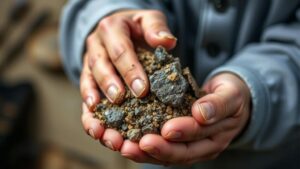The Role of XRF Machines in Detecting Fake Gold and Silver
The Role of XRF Machines in Detecting Fake Gold and Silver
The authenticity of precious metals like gold and silver is critical in various industries, including jewelry, investment, and manufacturing. With the increasing prevalence of counterfeit metals, the need for efficient and reliable detection methods has never been greater. X-ray fluorescence (XRF) machines serve as a pivotal technology in this realm, allowing for accurate analysis of metal samples. This article delves into the workings of XRF machines, their applications, and the advantages they offer in the fight against fake gold and silver.
Understanding XRF Technology
XRF is a non-destructive analytical technique used to determine the elemental composition of materials. It operates on the principle of measuring the fluorescent X-rays emitted from a sample when it is excited by an external source of X-rays. The energy levels of these fluorescent X-rays are characteristic of the elements present in the sample, thus enabling the identification and quantification of metals such as gold and silver.
The XRF machine typically comprises several key components:
- X-ray tube: Generates primary X-rays that interact with the sample.
- Detector: Captures the emitted fluorescent X-rays and converts them into measurable signals.
- Data processing unit: Analyzes the signals to identify and quantify the elemental composition.
The Importance of XRF in Precious Metal Verification
Counterfeiting of precious metals poses significant financial risks to consumers and industries alike. For example, the global gold market has been reported to face losses of approximately $1 billion annually due to counterfeit products. As a result, reliable detection technologies like XRF are essential for ensuring the integrity of these transactions.
XRF machines are particularly advantageous in verifying gold and silver because of their:
- Speed: Gold and silver analysis can be completed in a matter of seconds, allowing for rapid testing in retail environments.
- Non-destructive testing: XRF does not alter or damage the sample, which is vital for preserving valuable items.
- Accuracy: XRF provides precise measurements of gold and silver content, with detection limits that can reach parts per million (ppm).
Real-World Applications
Numerous industries leverage XRF technology for metal verification, including:
- Jewelry manufacturing: Jewelers utilize XRF to assure customers of metal authenticity before purchase.
- Investment firms: Companies dealing in bullion stocks use XRF machines to verify the purity of gold and silver bars.
- Recycling industries: Scrap dealers employ XRF to assess precious metal content in electronic waste or old jewelry prior to recycling processes.
A prominent example is the use of XRF machines at pawn shops. These establishments are often at risk of accepting fake gold. quick and accurate assessments provided by XRF technology reduce the risk of loss and enhance customer trust.
Addressing Common Concerns
While XRF technology offers significant advantages, it is essential to address some potential concerns:
- Calibration and maintenance: Regular calibration and maintenance of XRF machines are critical to ensure accuracy. Neglecting this can lead to incorrect results.
- Limitations in detecting alloys: XRF may struggle with accurately assessing the purity of complex alloys. For example, certain metal coatings can interfere with results.
It is advisable for users to combine XRF analysis with other methods, such as ultrasonic testing or acid tests, for comprehensive evaluation.
Actionable Takeaways
XRF machines represent a vital tool for detecting fake gold and silver in todays market. Key advantages, including speed, non-destructive methods, and high accuracy, make them indispensable for various industries. But, users must be aware of the limitations and ensure regular calibration and maintenance to uphold performance. By integrating XRF technology with other assessment techniques, stakeholders can effectively safeguard against counterfeit products and maintain trust in precious metal transactions.

